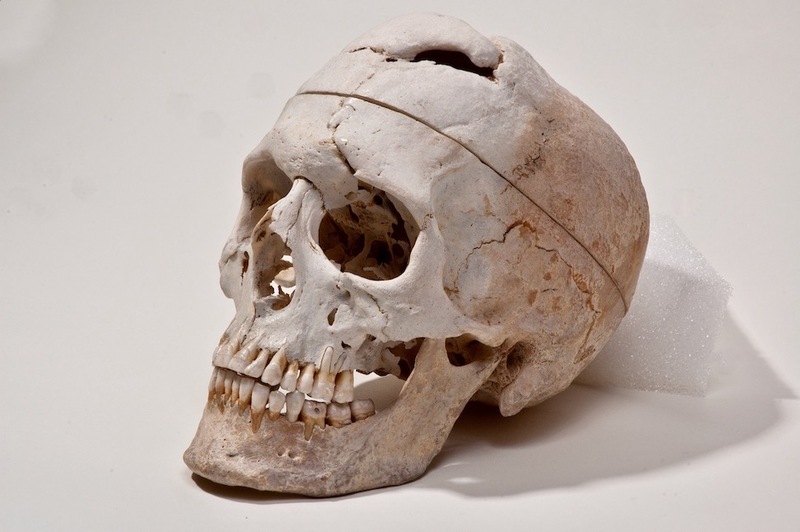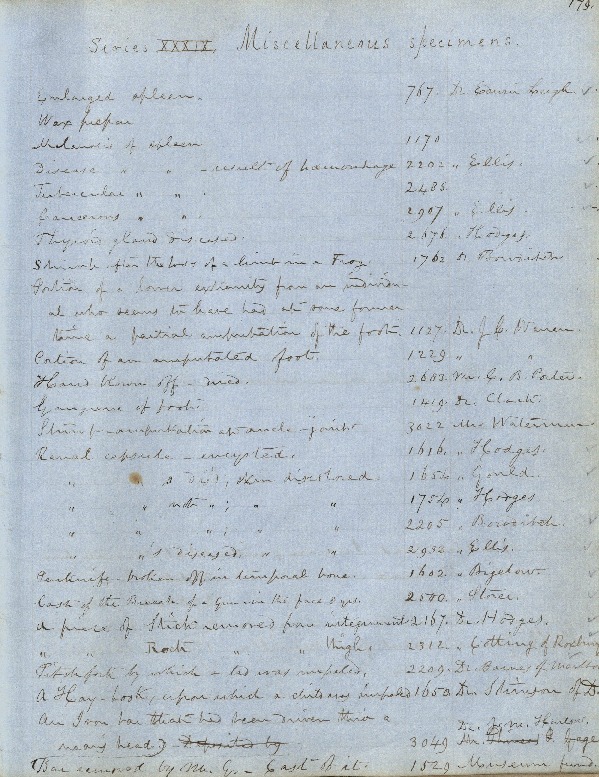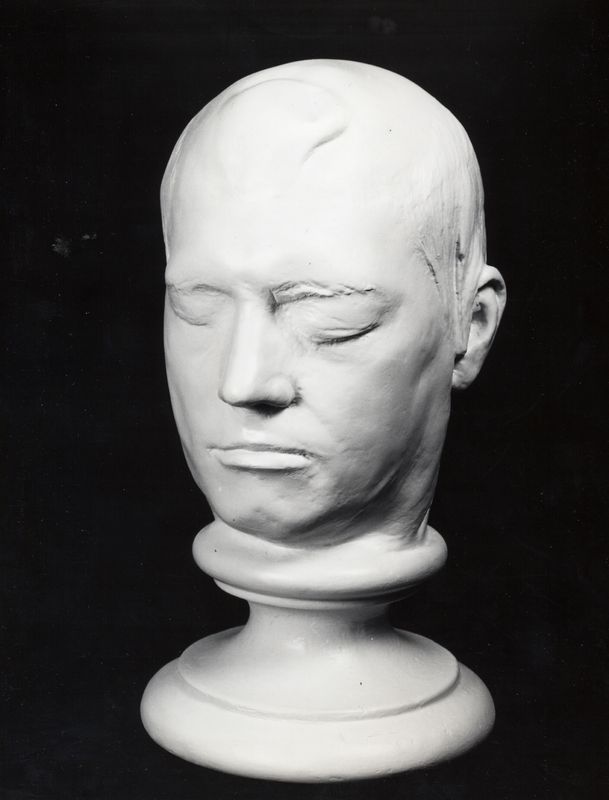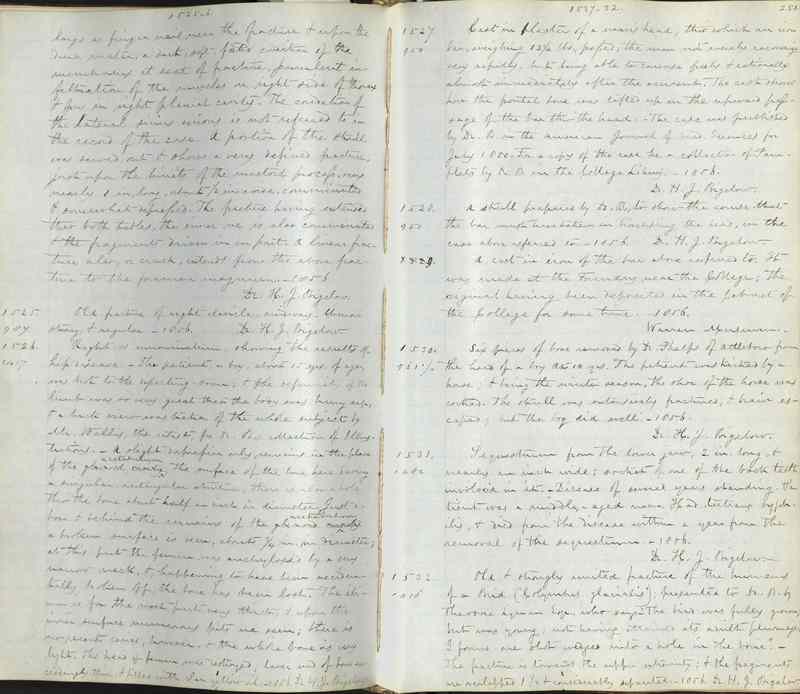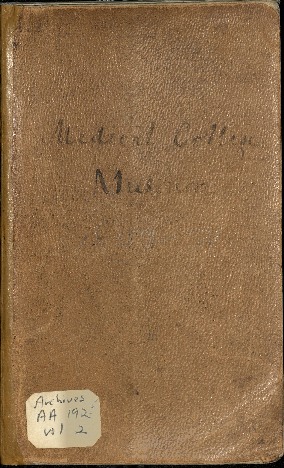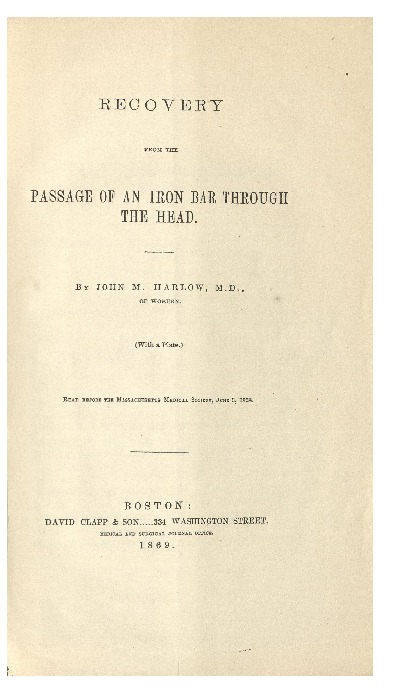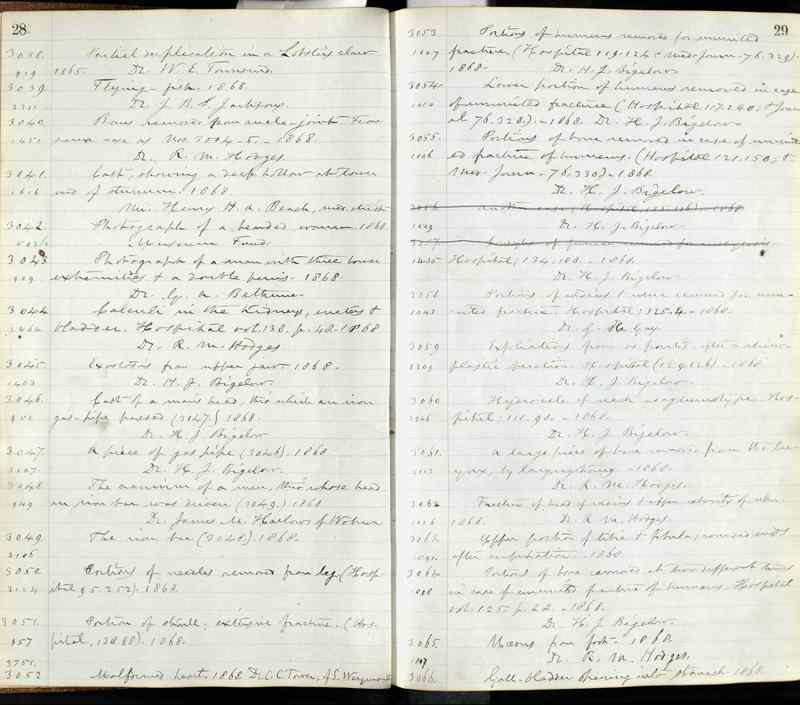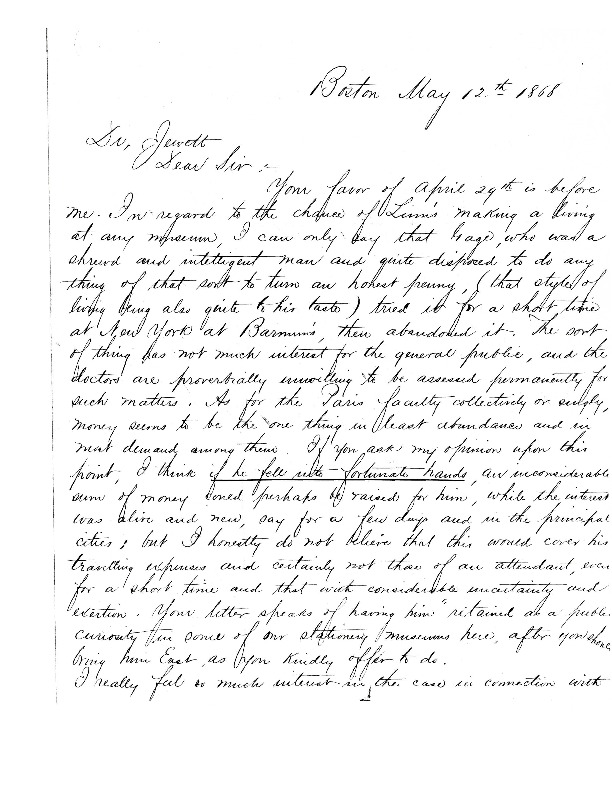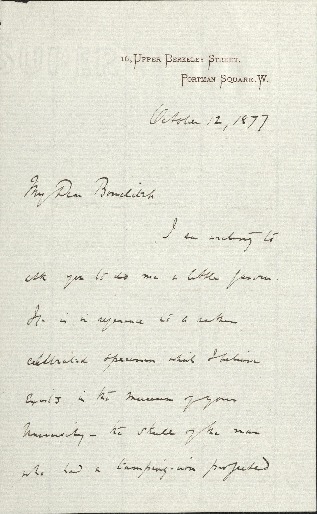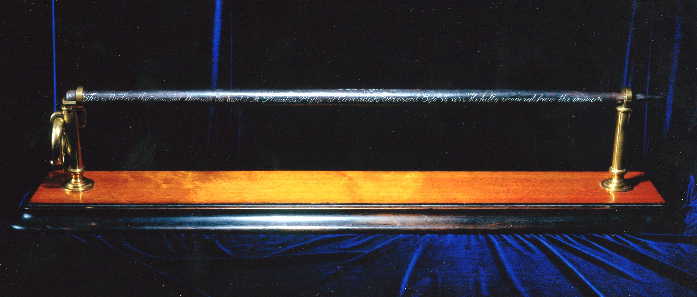The Case of Phineas Gage (1823 - 1860)
Phineas Gage (1823-1860) 3D STL Software Image
Graham Holt (Director of the Office of Creative Solutions, Laboratories of Cognitive Neuroscience, Boston Children's Hospital) developed the initial Phineas Gage 3D print from CT scans taken by Peter Raitu and Ian Talos (Surgical Planning Laboratory, Brigham & Women’s Hospital). The 3D animation was printed with PLA plastic for the Beyond the Bone Box Collection, a Warren Anatomical Museum curated educational kit sponsored by Harvard Library S. T. Lee Innovation Grant. Gage's skull was separated into two separate files: top and bottom. The damage of the tamping iron accident caused bone damage, fragmentation, and missing pieces.
“Passage of an Iron Rod through the Head,” December 13, 1848
The first published article about Phineas Gage, originally given as a speech, by Dr. John M. Harlow. A detailed account of Gage's recovery following the accident is given. A mention of the accident is provided in the Medical Miscellany.
“Dr. Harlow’s Case of Recovery from the Passage of an Iron Bar through the Head,” July 1850
Henry Jacob Bigelow, a doctor, brought Phineas Gage to Boston to his accident to study its impact. The article provides a summary of the Phineas Gage case with the inclusion of notes he made throughout the recovery. Bigelow notes this could be a "remarkable" case for brain injuries.
An entry for the Iron Bar of Phineas Gage in the Warren Anatomical Museum Index, 1850-1868
The entry marks the donation of the iron bar that went through Phineas Gage's head. Initially, the bar had been donated by Gage but then it was removed at his request in 1854. After Gage's death, Dr. Harlow obtained the bar with the approval of Gage's mother. He then donated it again into the Warren Anatomical Museum.
Head cast of Phineas Gage made during his life, 1850
A plaster cast of Phineas Gage was created in 1850 from his examination at Harvard Medical School. It was created to help understand the specifics of the neurotrauma. The cast is attached to plaster pedestal base and the entire work is painted white.
Handwritten note from Phineas Gage to Warren Anatomical Museum, August 26, 1854
A handwritten note asking for the removal of the iron bar at the request of Phineas Gage. The date written appears to be "August 24th, [18]54." Gage had been living in Chile since 1852. The message is from Gage; however, there is skepticism towards whether the handwriting is in fact Gage's or his cousin who delivered the note to the Warren Anatomical Museum. If the note is Gage's handwriting, then this is the only known evidence of his script. Document inscription is "3106 / Mr. B. R. Sweatland / Please deliver my iron / bar to the bearer / P. P. Gage / Aug 26th, 54"
Sixth plate cased daguerreotype of Phineas Gage (1823-1860), circa 1855
Sixth plate (2 3/4" x 3 1/4") cased daguerreotype of post-injury Phineas Gage. Portrait-style image depicts Gage holding the tamping iron that caused his 1848 frontal lobe injury. Bar marked with inscription from the Warren Anatomical Museum. As with most daguerreotypes, the image is laterally reversed, creating the mistaken impression that Gage was injured on right rather than the left side. The image is housed in a full wooden case covered with embossed brown paper made to simulate leather. The case interior is a red synthetic velvet cushion.
The Wilgus Daguerreotype is possibly first published photograph of Phineas Gage. The image had been discovered in the 2010s by the Wilgus family. The image was most likely taken between 1850-1854. The iron bar from the accident is shown with previous writing from the Warren Museum.
Entry on Phineas Gage in Manuscript Descriptive Catalogue of the Warren Anatomical Museum, Volume One, 1856 - 1858
The Warren Anatomical Museum holds the Manuscript Descriptive Catalogue Volume One. This is the original museum intake record of the Gage related materials in the Warren Anatomical Museum collection. Entry 1527 (#00950) discuss the cast, entry 1528 (#00951) discusses a skull casts, and 1529 (#36106) mentions the iron bar from the accident.
Entries on Phineas Gage in the Medical College Museum Ledger, December 1867 - February 1868
A ledger for the Medical College Museum detailing the financial purchases. Entries are associated with Phineas Gage are listed under December 1867, January 1868, February 1868, and September 1868. This includes transportation cost of the skull and iron in addition to display materials for the museum exhibit of the "Crowbar."
Recovery from the Passage of an Iron Bar through the Head, 1868
John Harlow's second published account on the case of Phineas Gage in 1868. This account was written after Gage's death and after Harlow had removed and examined Gage's skull, but before Harlow transfered the skull and tamping iron to the Warren Anatomical Museum.
Entries on Phineas Gage in the Descriptive Catalogue of the Warren Anatomical Museum, Volume Two, 1868
A second Descriptive Catalogue was written for the Warren Anatomical Museum. Collection items were given new catalogued numbers for the 1870 publication. The new numbers were assigned categorically instead of chronological order. Entry level 3048 discusses the skull and entry 3049 discusses the iron bar.
Discussion of Phineas Gage in Correspondence of Henry J. Bigelow to Dr. Jewett, May 12, 1868
Dr. Henry Jacob Bigelow writes a letter to Dr. Jewett about Lenn, a man with a similar case to Phineas Gage. Bigelow offers advice for different options on how Lenn could live his life post accident. An alternative is to continue to study from Lenn for medical research.
Entry on Phineas Gage skull and tamping iron in A Descriptive Catalogue of the Warren Anatomical Museum, 1870
The museum entries for Phineas Gage's skull and iron bar can be found in the 1870 publication of The Descriptive Catalogue of the Warren Anatomical Museum. Gage's skull is listed as museum number 949 in the "Morbid Anatomy" in the "Second Division." Series XX lists bones in the museums collection. Dr. John Harlow began a correspondence with Gage's mother in order to receive updates about his health. Warren Museum curator, J. B. S. Jackson, D. D. Shattuck, Esq. (Gage's brother-in-law), Dr. Coon (Mayor of San Francisco), and Dr. J. D. B. Stillman were recognized for their retrieval of Gage's skull (no. 949) and the iron bar (no. 3106) from the accident. Museum entry 950 lists the cast that Dr. Henry Jacob Bigelow took of Gage's head in 1850.
Correspondence Sir David Ferrier to Henry Pickening Bowditch, 1877-1879
Correspondence between Sir David Ferrier and Henry P. Bowditch with mention of the case of Phineas Gage as a subject for lecture and publication.
Dr. Elmer E. Southard with visitors looking at the 'crow-bar skull' preserved by Dr. John M. Harlow on exhibit in the Warren Anatomical Museum, circa 1915.
A photograph of the original Phineas Gage exhibit in the former Warren Anatomical Museum. Showcased is the skull of Phineas Gage, a life cast of Gage, and the tamping iron from the accident. The woman second in from the left is Annie Taft. Pictured to the far right is Elmer E. Southard
Tamping iron that caused the injury to Phineas Gage, 1848
The tamping iron from the railroad accident that had gone through Phineas Gage's head after an explosion. The bar is three feet seven inches in length with a tapered end on one side and the other blunt. Initially, the bar was donated by Phineas Gage to the Warren Anatomical Museum. Dr. Henry Jacob Bigelow had the bar etched with an inscription painted in white that describes the event. The inscription mispelled Phineas's name to "Phinheas." The bar is pictured in brass and wood mount.

